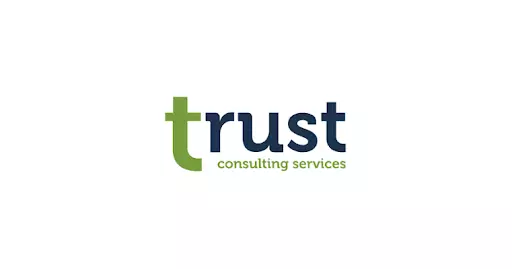News
A Guide to Security Compliance and Engineering

In today’s digital world, security compliance and engineering are equally crucial for keeping IT systems safe and sound. These tools help protect private information, prevent cyber attacks, and build user trust.
Risk management, cyber security, and engineering work together to keep data safe. By working together, these three areas ensure that sensitive information stays safe and sound, helping everyone trust the technology they use daily.
Cybersecurity compliance requires both large and small organizations to adhere to a minimum security level expected to protect their system and critical data. We’ll discuss security regulations and frameworks, identify risks and difficulties, and provide recommendations for a successful security policy. We will also discuss security compliance and engineering and why it is important for any organization that uses technology.
Understanding IT Security Compliance
IT security compliance comprises enterprises following existing laws, regulations, and standards to secure data and information networks. Compliance is significant because it gives organizations enough safeguard measures to prevent misuse or unauthorized access to data through cyber threats.
This ensures the security of individual and corporate information and preserves the organization’s reputation and credibility by showing a willingness to respect data protection requirements.
The observance of regulatory standards is not about preventing legal fines but rather about building a secure and resilient environment that minimizes cyber intrusion and attack risks. Compliance is also crucial to businesses in regulated industries because it enables them to operate and meet contractual requirements.
Common Compliance Frameworks and Regulations

Each of these policies and regulations names different restrictions based on the type of data the organization handles and its activities. By adhering to these standards, organizations will adhere to international rules and, as a result, avoid fines and penalization caused by security risks.
- General Data Protection Regulation (GDPR): The GDPR is a data protection law in the European Union that requires organizations to respect the privacy and security of data related to EU citizens. The regulation provides for transparency, security, and accountability for data processors, and at the same time, the subjects get substantial rights.
- Health Insurance Portability and Accountability Act (HIPAA): In the United States, HIPAA stipulates the type and extent of protectiveness required for patients’ medical records. On the other hand, entities that maintain PHI (protected health information) must have physical, technical, and procedural countermeasures and follow them rigorously to comply with the HIPAA mandate.
- Payment Card Industry Data Security Standard (PCI DSS): These encryption regulations must be followed by all firms working with credit card details—not only those that store them but also those that process and transmit them. This prevents most credit card fraud. The companies in charge of the major credit cards enforce the rules, whereas any business that processes credit card transactions is obliged by those rules.
The Role of Engineering in Security Compliance
Engineering practices are vital for effectively implementing security measures in information technology. By restructuring security at the early design and operating stages, companies can establish less vulnerable environments.
By implementing these several engineering practices, companies can substantially boost their systems’ security and steadfastness, decrease the possibility of data breaches, and become compliant with the existing security/privacy policies.
Here’s how engineering practices contribute:
1. Secure Design Principles: The innate sense of security starts right from the construction process. Security improvements will occur when the engineers ensure that secure design principles guide their work and anticipate potential security problems to mitigate these challenges. This includes limiting the attacking surface, applying credential management, and creating easy-to-maintain security controls.
2. Threat Modeling: This is done by identifying possible solutions and keeping track of them during the design process to mitigate the risk before deployment. Threat modeling is employed where engineers attempt to emulate an attack and test the defenses, which helps to understand how an attacker could breach the system and contemplate the consequences.
3. Security by Default: Engineering practices ensure that systems are secure by default, meaning that the most secure settings are the standard configuration. This approach reduces the chance of security oversights and ensures the system remains protected even if configurations are changed.
4. Code Review and Static Analysis: Regular code reviews and static analysis are crucial engineering practices. These processes involve scrutinizing written code to detect security flaws, coding errors, and vulnerabilities. Developers can prevent potential exploits in live environments by catching these issues early.
5. Automated Security Testing: Automation tools can constantly search and test systems for possible loopholes, helping engineers continually evaluate the results of the adopted security measures. This means that the company will use tools such as penetration testing, vulnerability scanning, and software composition analysis to look for insecure third-party components.
6. Patch Management and Updates: Efficient engineering goes beyond deploying systems; it also involves upgrading and maintaining the software to ensure that the possible holes are blocked and patched on time. Engineers must put safety first, carry out patches, and implement software changes as soon as security breaches are discovered.
7. DevSecOps: The DevSecOps culture is a security component in the development process that provides for continuous and pervasive security considerations. Therefore, this approach is a joint effort to develop operations and security team positions, which make everyone responsible for security so it is addressed.
Importance of Cybersecurity in Protecting Against Cyber Threats and Attacks
Cybersecurity must be viewed as a critical element in protecting against the many different cyber threats and attacks by highly advanced malicious parties. It is considered the main line of defense for protecting sensitive data, ensuring that information technology systems are not compromised, and preserving individuals’ privacy.
If organizations implement strong cybersecurity strategies, including firewalls, antivirus software, intrusion detection systems, and encryption, cybercriminals will be cautious. Anomalies can be detected, and incidents can be responded to promptly, resulting in less harm.
The right security measures against data breaches safeguard the business’s reputation and operational capability. With data breaches that can match financial revenue with regulatory penalties, a strong cybersecurity position is necessary to provide business continuity and build trust between clients and stakeholders.
Role of Risk Management in Compliance Efforts and Maintaining a Secure IT Environment

Risk management is a key point of cybersecurity strategies, and it is useful for companies to follow regulatory requirements. This means that in this process, vulnerabilities should be identified, ranked, and addressed, then resources should be aligned and applied to minimize and monitor the impacts of the risks.
In this regard, risk management ensures that the companies meet all requirements set by law in that particular industry, for example, GDPR concerning data privacy in EU countries, HIPAA touching on medical data in the U.S., or PCI DSS related to payment card security. By effectively integrating cybersecurity measures with compliance requirements such as risk management, organizations can avoid high penalties and costs; thus, monitoring cyberspace threats can be made more accessible.
Furthermore, risk management contributes to maintaining a secure IT environment by enabling organizations to:
- Continuously Monitor and Improve: Through routine inspection, the monitoring team will be able to understand the current threats and take defensive measures.
- Allocate Resources Effectively: First, it conveys to organizations that they should prioritize risks and align their security resources with the most critical vulnerabilities.
- Integrate Security Practices Across All Operations: Successful risk management will involve building a risk-aware organizational culture where security is a top factor influencing decision-makers and rule bypassing is impossible.
In totality, it consists of cyber security and risk management which creates a resilient framework for business organizations that guarantees protection from cyber attacks, compliance with legal and regulatory requirements, and overall security of the IT environment. This two-way approach is thus very significant in the digital era, where the cost and frequency of cyber attacks have reached the sky.
Wrapping Up
We discussed the vital part of risk management from the compliance aspect, highlighting how it ensures the organization has a well-thought-out defense. Combine risk management with cybersecurity practices to develop a secure IT environment, distribute resources appropriately, and smooth adaptation of emerging threats.
The digital environment is a dynamic and advanced phenomenon that emphasizes the efficiency of cybersecurity measures and proactive risk management. Organizations of every size should consider security a priority, stay alert, and update their methods to counter new threats on an ongoing basis.
The best way to ensure a solid security posture is to revisit the compliance standards more often and incorporate the current best practices into the organization.
We invite all our readers to pay close attention to these revelations and actively participate in the eventful environment of cybersecurity. Keeping abreast of the situation and practicing preventive measures are your greatest advantages against cyber risks, which is an ongoing issue in our current world. Hence, cybersecurity is not just cybersecurity—your data, clients, and reputation are at stake here.
get the best consultation
Please complete the form below so we can direct your inquiry to the right expert.
Latest News
Transform Your Workplace with Superior Facility Services
News Transform Your Workplace with...
Read MoreImprove Your Approach: Effective Management Solutions
News Improve Your Approach: Effective...
Read More

